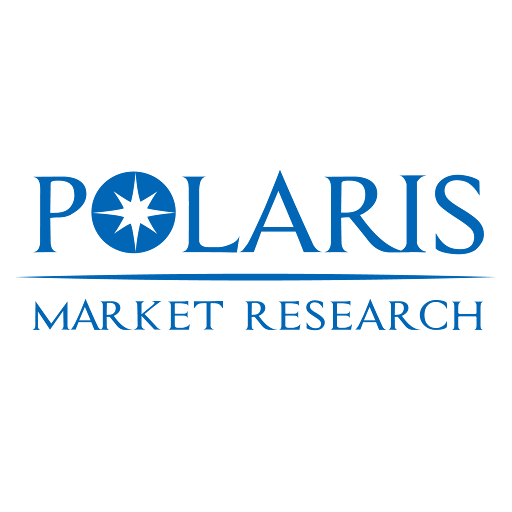Expanding Treatment Landscape Fuels Growth in Global AMD Market

The global Age-related Macular Degeneration (AMD) market was valued at USD 11.79 billion in 2024 and is expected to grow at a compound annual growth rate (CAGR) of 8.0% during the forecast period through 2034. This robust expansion reflects the escalating burden of visual impairment among aging populations worldwide, coupled with significant advances in diagnostic precision and therapeutic intervention. AMD—the leading cause of irreversible central vision loss in adults over 50 in developed nations—affects more than 196 million people globally, a figure projected to surpass 288 million by 2040, according to data from the International Agency for the Prevention of Blindness. As life expectancy rises and screening protocols improve, earlier detection of both dry (non-neovascular) and wet (neovascular) forms of AMD is translating into greater treatment uptake. Moreover, heightened awareness among ophthalmologists and patients, supported by public health initiatives and digital retinal imaging technologies, is accelerating diagnosis rates and expanding the addressable patient pool. The market’s growth trajectory is further amplified by the commercial success of anti-VEGF biologics and the long-anticipated arrival of the first disease-modifying therapies for geographic atrophy (GA), the advanced form of dry AMD.
Market segmentation reveals distinct dynamics across disease type, therapy class, and route of administration. By disease form, wet AMD currently dominates revenue generation, accounting for over 85% of the market despite representing only 10–15% of total AMD cases. This dominance stems from the availability of highly effective intravitreal anti-VEGF injections—such as aflibercept, ranibizumab, and brolucizumab—that require frequent, ongoing administration, generating sustained drug revenue. In contrast, dry AMD, which constitutes the vast majority of cases, has historically been an untapped commercial segment due to the absence of approved pharmacotherapies. However, this landscape shifted dramatically in 2023 with the U.S. FDA approval of pegcetacoplan (Syfovre) and avacincaptad pegol (Izervay), the first complement inhibitors for GA. These breakthrough therapies mark the dawn of a new era in dry AMD management and are expected to drive exponential growth in this sub-segment over the coming decade. By treatment type, the market is segmented into pharmacotherapy, diagnostics, and surgical interventions, with pharmacotherapy commanding the lion’s share. Within therapeutics, anti-VEGF agents remain the gold standard for wet AMD, though intense competition has spurred innovation in dosing frequency and delivery systems. Emerging modalities—including gene therapies designed to provide sustained intraocular anti-VEGF expression and port delivery systems that reduce injection burden—are gaining clinical traction and represent the next frontier in treatment personalization and long-term disease control.
Regionally, North America leads the global AMD market, capturing nearly 45% of total revenue in 2024. The United States serves as the primary growth engine, supported by a large elderly population, high healthcare expenditure, widespread access to advanced retinal care, and rapid adoption of novel therapies following FDA approval. Medicare reimbursement policies for intravitreal injections also ensure consistent treatment access, reinforcing market stability. Europe represents the second-largest region, with Germany, France, and the UK at the forefront of AMD management. While EU regulatory pathways (via EMA) are rigorous, national health systems often impose cost-containment measures that delay premium drug uptake. Nevertheless, the recent approvals of GA therapies are expected to reshape reimbursement negotiations and expand treatment eligibility. The Asia Pacific region is the fastest-growing market, projected to exceed 9.5% CAGR through 2034. This acceleration is fueled by rapidly aging societies in Japan, South Korea, and China, rising disposable incomes, and government investments in ophthalmic infrastructure. Japan, in particular—with one of the world’s oldest populations—has a high prevalence of AMD and serves as a key launch market for global innovators. Meanwhile, India and Southeast Asia are witnessing increased screening initiatives and tele-ophthalmology adoption, improving early detection in underserved areas. Despite these advances, disparities in access persist, and healthcare accessibility remains a critical barrier in low-resource settings, where diagnostic equipment and specialist care are limited.
The competitive landscape is dominated by established pharmaceutical and biotechnology firms with deep ophthalmology expertise and robust commercial infrastructures. Market leaders are aggressively pursuing pipeline diversification, investing in next-generation anti-VEGF molecules with extended durability (e.g., faricimab, which targets both VEGF-A and Ang-2), as well as gene therapies like RGX-314 and ADVM-022 that aim to eliminate the need for repeated injections. Strategic acquisitions have also played a pivotal role: Roche’s acquisition of Genentech solidified its leadership with Lucentis and Vabysmo, while Apellis Pharmaceuticals and Iveric Bio (now part of Astellas) pioneered the GA space with Syfovre and Izervay, respectively. Companies are increasingly focusing on real-world evidence generation and patient support programs to differentiate their offerings in a crowded anti-VEGF market and justify premium pricing for novel GA therapies. Additionally, partnerships with diagnostic firms to integrate AI-powered retinal analysis tools are enhancing early identification and treatment monitoring—a critical component of value-based care models.
Key companies shaping the future of the AMD therapeutic and diagnostic landscape include:
- Roche Holding AG – A global leader with a dual-asset portfolio: Vabysmo (faricimab), the first bispecific antibody for wet AMD, and Susvimo, a port delivery system for ranibizumab.
- Regeneron Pharmaceuticals, Inc. – Developer of Eylea (aflibercept), one of the highest-grossing ophthalmic drugs worldwide, with next-gen candidates in late-stage trials.
- Novartis AG – Markets Beovu (brolucizumab) and collaborates on gene therapy innovations, maintaining a strong presence in both wet AMD and emerging modalities.
- Apellis Pharmaceuticals, Inc. – Pioneer in complement inhibition with Syfovre (pegcetacoplan), the first FDA-approved therapy for geographic atrophy.
- Astellas Pharma Inc. (via acquisition of Iveric Bio) – Commercializing Izervay (avacincaptad pegol), a second-in-class GA therapy with a differentiated safety profile.
More Trending Latest Reports By Polaris Market Research:
Gluten Free Breakfast Cereals Market
- AI
- Vitamins
- Health
- Admin/office jobs
- News
- Art
- Causes
- Crafts
- Dance
- Drinks
- Film
- Fitness
- Food
- Jocuri
- Gardening
- Health
- Home
- Literature
- Music
- Networking
- Alte
- Party
- Religion
- Shopping
- Sports
- Theater
- Wellness


